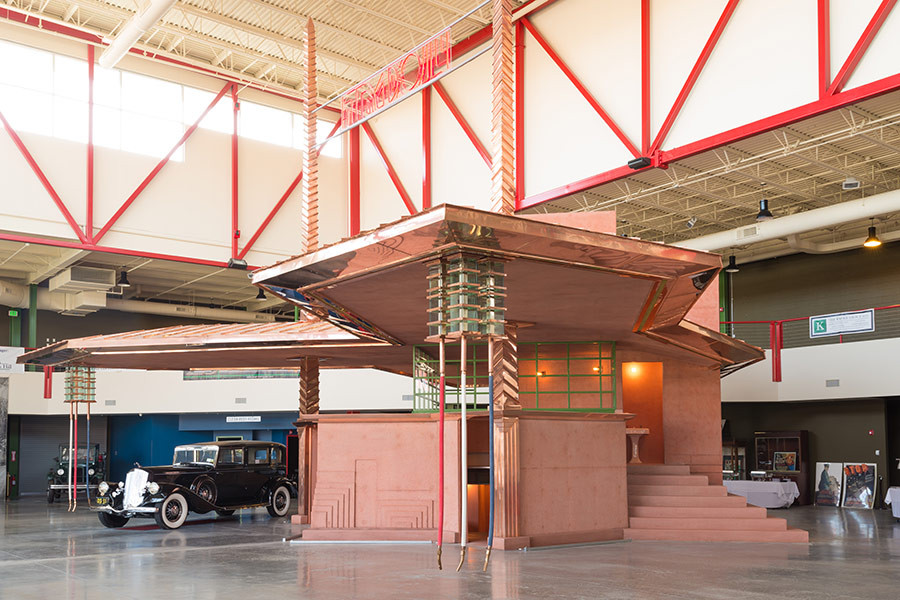
Many architects have portfolios full of projects that were never built, and Frank Lloyd Wright is no exception. Now, however, the Buffalo Pierce-Arrow museum in New York has brought one of Wright’s more imaginative conceptual projects to life. In this article from Metropolis, we are introduced to a gas station designed by Wright for his (also unbuilt) Broadacre City project.
Frank Lloyd Wright boasts a portfolio of more than 500 built projects—an impressive amount that pales in comparison to his unbuilt work. These schemes included, among several fancificul ideas, a new agra-centered city to revitalize the country. Indeed, American urbanism might have taken a very different route had his sweeping Broadacre vision been fully realized.

A focal point of Wright's mythical city was the automobile. It follows then—and Wright confirmed it himself—that the lowly gas station, usually the most haphazard of structures, would be elevated to Architecture, an honor befitting a temple, institutional building, or, yes, a Wright-designed villa. The architect designed a handful of such stations in his career, though many didn't make it off the drawing boards. A new exhibit at the Buffalo Pierce-Arrow Museum realizes one of these zany schemes.
The museum has just debuted the Buffalo Filling Station, a previously unrealized work that was originally designed in 1927. The installation was made possible by a $6.3 million grant from the State of New York, and is housed in an all-new glass and steel atrium. Patrons of the bespoke station would have waited on service in the utmost comfort. The salmon-colored concrete structure, recreated in the museum's atrium, boasts a second-level viewing platform, restrooms, and even a fireplace. The copper roof, unlikely to ever turn its expected green, is pierced by two 45-foot-tall poles which Wright referred to as "totems."

The design itself is very recognizably Wrightian, with its shifting floorplates, precise ornamentation, elongated shape, and subdued color palette. In a bit of a throwback, the exhibit also includes an old car and a neon sign for Tydol, a well-known gas company at the time.
Wright's interest in the automobile's role in architecture was well known, and many of his designs treat oft-overlooked automotive spaces with a kind of reverence. These days, it's almost difficult to imagine a pleasant rest stop—if Wright had had his way, we all would have been traveling and filling up in style.

